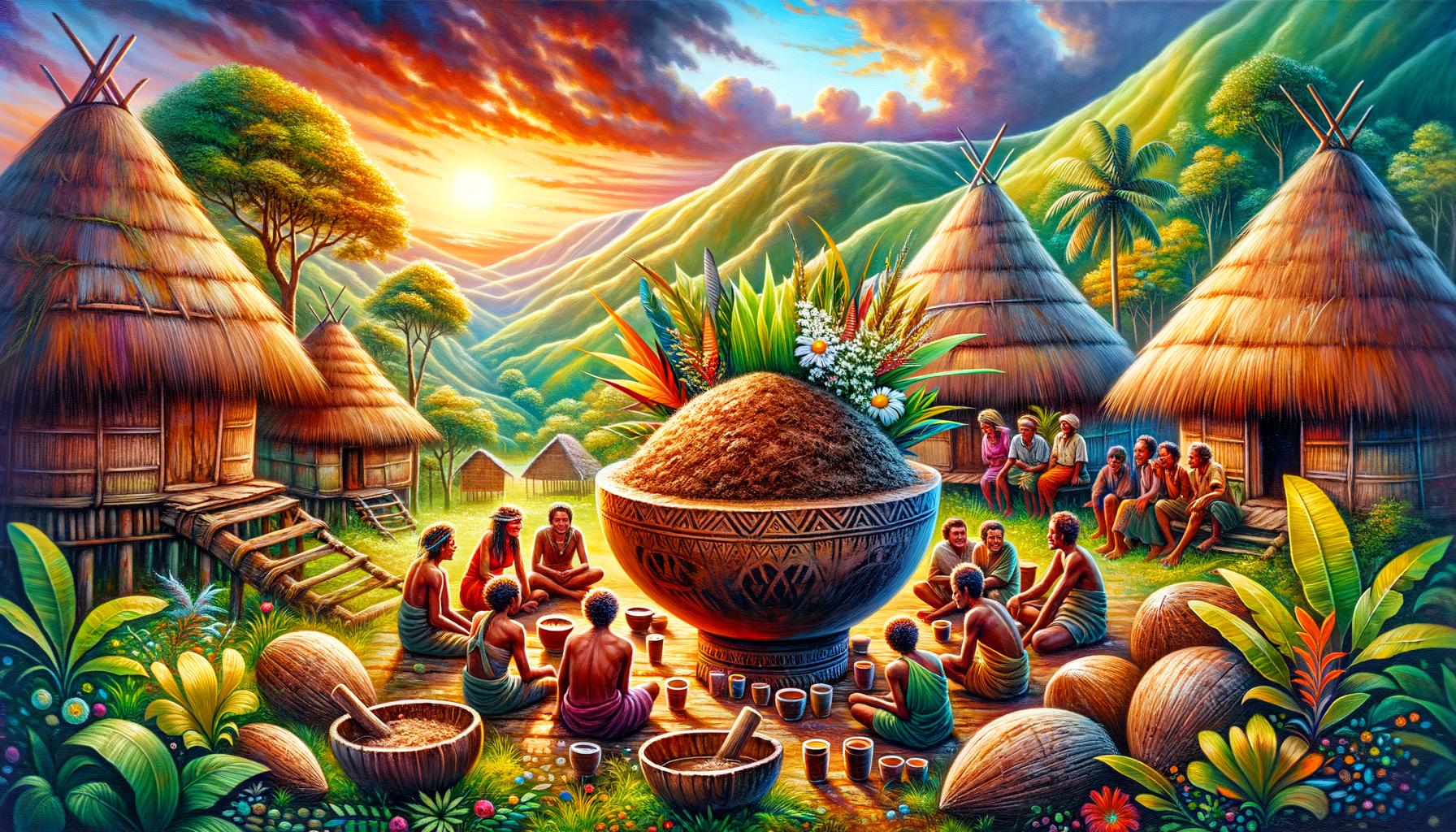Introduction to Kava in East Timor
Kava is a special drink made from roots, popular in the Pacific Islands. East Timor, a tiny but rich country in Southeast Asia, enjoys kava too. Let’s learn how kava fits into East Timorese traditions and daily life.
Understanding Kava: The Basics
Kava comes from a plant called Piper methysticum, native to the South Pacific. People grind its roots and mix them with water to create a drink that helps you relax. In East Timor, kava is loved for its calming effects and for bringing people together.
Different places have their own ways of making and drinking kava. East Timor has its unique traditions and methods too.
Historical Journey of Kava in East Timor
No one knows exactly how kava first came to East Timor. Some say it arrived through ancient trade routes. At first, it was used in ceremonies to show respect. Over time, it became a common part of East Timorese life.
Cultural Significance of Kava in East Timor
Kava is important in many East Timorese events like weddings and festivals. Sharing kava is a way to show kindness and build friendships.
In East Timor, people also tell stories while drinking kava. One famous story is about spirits helping people through dreams after they drink kava. These tales make kava even more special.
Traditional Preparation & Consumption
To prepare kava, East Timorese pound the kava roots into powder. They mix the powder with water in a big wooden bowl called an "anoa." They strain the mix through a cloth to get a smooth drink.
Today, some people add herbs and spices to kava to make it more interesting, especially for younger folks. Kava is often served in coconut shells or wooden cups, which everyone shares in a circle.
Personal Anecdotes from Matt Warren
When Matt Warren visited East Timor with Psychedelic Water, he found sharing kava with locals special. He felt welcomed and learned about their history and traditions. One village elder even shared a secret kava recipe with him, blending it with rare local herbs.
Kava’s Impact on East Timorese Society
Kava helps people in East Timor relax and feel less stressed. It also helps local farmers make money by growing and selling kava. But there are challenges like making sure farming is sustainable.
Local Insights: Interviews with Experts
We talked to Augustus, a kava farmer, who said kava farming helps keep their heritage alive. Dr. Lemos, an anthropologist, believes that respecting traditions is key to a bright future for kava.
Unique Practices Compared to Other Regions
Each Pacific Island nation has its own kava traditions. In East Timor, kava sharing is more casual and focuses on building social bonds rather than formal ceremonies.
Around the world, kava is becoming popular not just for relaxation but also for its cultural background. East Timor’s way of enjoying kava highlights community and unity.
The Future of Kava in East Timor
Tourism focused on kava could grow big in East Timor. Imagine taking kava tours or trying kava-based foods! By making interesting kava products, the world can learn more about this tradition.
At KavaKist, we aim to support this growth by working with local communities and promoting good practices. We want to share real East Timorese kava experiences with everyone.
Conclusion
Kava in East Timor is more than just a drink. It’s a symbol of culture and community. Next time you drink kava, think about the ancient stories and the bond it creates among people.
Call to Action
Want to explore the world of kava more? Try a traditional East Timorese kava recipe shared by Matt Warren. Share your kava story with us on KavaKist. Subscribe to our newsletter for the latest news and stories about kava! Sip, share, and join the kava journey with us.

Leave a Reply